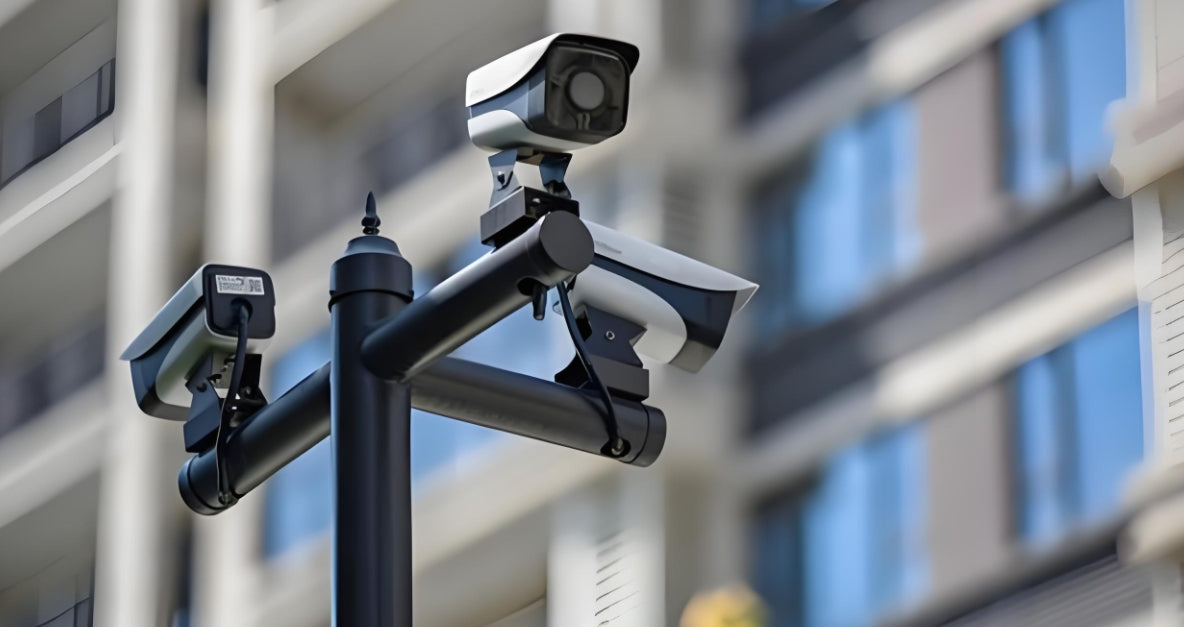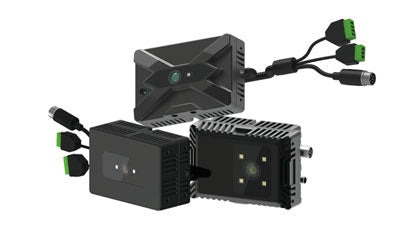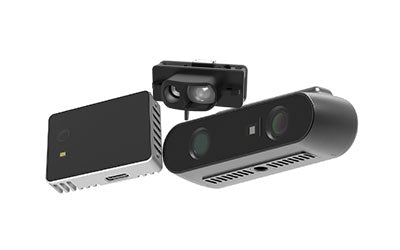Exploring ToF Cameras' Application Potential in Security Surveillance

The rapid development of smart security technologies, traditional surveillance equipment faces increasing demands. Not only must it capture high-definition images, but it also needs to provide precise depth perception in complex environments.
As an advanced 3D imaging technology, Time-of-Flight (ToF) cameras are gradually becoming a crucial technology in the security surveillance field due to their unique advantages in depth perception, environmental adaptability, and real-time performance. This article explores the application potential of ToF cameras in security surveillance and analyzes their technological advantages and challenges.
What is a ToF Time-of-Flight Sensor?
A ToF (Time-of-Flight) sensor is a type of distance measurement technology that calculates the distance between the sensor and an object by measuring the time it takes for a light signal to travel from the sensor to the object and back. Using the known speed of light, the round-trip time can be used to determine the precise distance to the object.
ToF sensors typically use lasers, infrared light, or other light sources to perform measurements. They can generate highly accurate depth data and are widely used in 3D imaging, object detection, gesture recognition, autonomous driving, robot navigation, and industrial measurements. Compared to other depth sensing technologies (such as structured light or stereo vision), ToF sensors have the advantage of being able to operate reliably in different lighting conditions, offering higher measurement accuracy and stronger resistance to interference.
Technical Principles of ToF Cameras
A ToF camera is a device that calculates the distance to an object by measuring the time it takes for light to travel from the emitter to the object and return. It uses infrared light pulses to determine the depth information for each pixel, thus creating an accurate 3D depth map. Compared to traditional 2D cameras, ToF cameras can rapidly capture depth information across a wide range and provide multi-dimensional data support for surveillance systems.
ToF cameras also have high real-time performance and excellent resistance to ambient light interference, allowing them to operate stably in strong light, low light, and even completely dark environments, making them suitable for various complex surveillance scenarios.
Applications of ToF Cameras in Security Surveillance
1. Intelligent Face Recognition and Identity Authentication
ToF cameras can perform 3D modeling of faces using precise depth information. Compared to traditional 2D face recognition technology, ToF cameras can more effectively prevent spoofing or fraudulent attacks. They are not affected by lighting changes and can efficiently recognize faces even in low-light or strong light environments. Combined with facial recognition technology, ToF cameras have wide application prospects in access control, financial payments, and public security.
2. Behavior Analysis and Anomaly Detection
By capturing 3D depth information in a scene, ToF cameras can perform precise analysis of human behavior. For example, in security surveillance, ToF cameras can identify abnormal behaviors such as entering restricted areas or lingering in certain spots, triggering alarms in real time, and enhancing the intelligence of the surveillance system. Additionally, ToF technology can be combined with AI algorithms for crowd density monitoring and anomaly detection, such as crowding, running, or sudden stops, improving safety in public places.
3. Precise Motion Tracking and Intrusion Detection
ToF cameras have a significant advantage in detecting dynamic targets, providing real-time depth information and position changes. Compared to traditional video surveillance, ToF cameras can more accurately track moving targets, especially in low-light environments or at night. In intrusion detection systems, ToF cameras can precisely detect abnormal activities or illegal intrusions, raising alarms in a timely manner, thus enhancing security capabilities.
4. 3D Environment Modeling and Surveillance Area Division
ToF cameras can create high-precision 3D environment maps in real-time, providing more comprehensive perception data for security systems. By integrating 3D models of buildings, surveillance systems can better divide monitoring areas and accurately identify blind spots in each area. This enables security personnel to have a clear understanding of the safety status of each surveillance area, effectively reducing security risks.
5. Stable Surveillance in Low-Light and Strong Light Conditions
ToF cameras have superior environmental adaptability compared to traditional cameras. They can perform depth sensing in low-light or even no-light environments, making them ideal for nighttime surveillance and other security tasks in strong light conditions. For example, in nighttime parking lots or indoor warehouses, ToF cameras can effectively capture depth information of targets, providing accurate data support for security systems.
Advantages of ToF Cameras in Security Surveillance
1. High-Precision Depth Perception
ToF cameras can measure the time it takes for infrared light pulses to travel, allowing for real-time, precise calculation of the distance between the object and the camera, and generating high-precision 3D depth maps. This depth information provides rich 3D data support for surveillance systems, enabling precise identification of target objects and detailed analysis of their spatial positions and movement trajectories. Compared to traditional 2D images, ToF cameras can more effectively detect behaviors such as posture and motion details, further enhancing the intelligence of the surveillance system, helping security personnel achieve more accurate target tracking and anomaly detection.
2. Strong Resistance to Interference
ToF cameras exhibit excellent environmental adaptability and can operate stably under extreme lighting conditions. For example, they can still provide clear depth information in strong light (such as direct sunlight) or low-light environments (such as nighttime surveillance), overcoming the reliance on lighting required by traditional cameras. Even in conditions with smoke, fog, or other obstructions, ToF cameras can accurately perceive the distance and position of objects, ensuring the stability and efficiency of security surveillance systems in various complex environments. This strong resistance to interference makes ToF cameras ideal for outdoor monitoring, nighttime surveillance, and industrial monitoring.
3. Real-Time Performance and High Frame Rates
ToF cameras have a significant advantage in real-time performance and frame rates. Compared to traditional cameras, ToF cameras can acquire depth data at a faster rate, greatly enhancing the system's responsiveness to dynamic scenes. They can quickly capture the movement trajectories of targets, responding in real time to potential threats, especially in applications like security patrols, traffic monitoring, and public safety. High frame rates and low latency enable ToF cameras to process events more quickly in high-risk environments, improving the overall security response speed.
4. Simplified System Integration
The system integration process for ToF cameras is relatively simple. Compared to other types of depth cameras, ToF cameras do not require complex calibration processes. Their sensor design allows for the direct generation of depth maps, avoiding the additional processing steps required for 3D reconstruction by traditional cameras.
ToF cameras can capture both depth information and image data on a single hardware platform, greatly simplifying the system architecture and reducing dependence on additional hardware. Additionally, ToF cameras typically have low power consumption, allowing them to provide efficient data processing capabilities without increasing the system's load. The low power consumption and high integration make ToF cameras more cost-effective for security surveillance solutions, reducing overall equipment costs.
Challenges of ToF Cameras in Security Surveillance
Despite the huge application potential of ToF cameras in security surveillance, several challenges remain that need to be addressed in future technological advancements.
1. Low Resolution
While ToF cameras provide high-precision depth perception, their resolution is generally lower than that of traditional high-definition cameras. Although depth information can accurately describe the 3D position of objects, ToF cameras may still have limitations in capturing fine details. For example, in tasks such as facial recognition and object detail analysis, the resolution of ToF cameras may not meet the needs for fine-grained analysis, especially in complex surveillance environments.
Therefore, in certain high-demand application scenarios, the image resolution of ToF cameras may be unable to compete with high-resolution traditional cameras, affecting the overall monitoring effectiveness.
2. Limited Working Distance
ToF cameras typically have a limited effective sensing range, especially in large-scale surveillance environments, where the short effective range can affect their application performance. While ToF cameras provide highly accurate depth data at short distances, their ability to detect and track targets at longer distances is relatively limited. In large areas such as parking lots, warehouses, or city squares, ToF cameras may not effectively capture distant objects, leading to surveillance blind spots. Therefore, enhancing the working distance and detection accuracy of ToF cameras is a key direction for future development.
3. Dependence on Ambient Light
Although ToF cameras have strong resistance to interference, they may still be affected by ambient light in extreme conditions. For example, in environments with intense reflective light (such as direct sunlight, glass, or water surfaces) or strong artificial light sources, ToF cameras may experience noise interference, leading to inaccurate measurements or data anomalies. While ToF cameras perform better than traditional cameras in terms of light interference, improving their adaptability to different lighting environments remains a challenge.
4. Data Processing and Algorithm Demands
ToF cameras often require more powerful computing capabilities and efficient algorithms when processing large amounts of depth data. While depth data provides precise 3D spatial information, it also demands high-efficiency data processing techniques to ensure real-time performance and responsiveness. As security surveillance scenarios become more complex, involving dynamic changes and target tracking, improving the data processing capability and developing more intelligent, efficient algorithms is a key challenge for ToF cameras in security surveillance applications.
5. Cost Issues
Although ToF cameras are easier to integrate and offer advantages in power consumption and cost, their initial cost tends to be higher. High-precision ToF sensors and corresponding hardware platforms often increase the overall system cost, especially in large-scale deployments for security projects.
The higher cost of ToF cameras compared to traditional security equipment may limit their application in small to medium-sized enterprises and low-budget security projects. Although technological advancements may gradually reduce the cost of ToF cameras, they still remain more expensive than traditional surveillance devices in the current market, which may restrict their widespread adoption.
Conclusion
As an emerging 3D imaging technology, ToF cameras have shown great potential in security surveillance due to their high precision, strong environmental adaptability, and real-time performance.
Whether for intelligent facial recognition, behavior analysis, or stable surveillance in low and strong light conditions, ToF cameras exhibit enormous application potential. As the technology continues to improve, ToF cameras will become more cost-effective, and their performance will keep improving, allowing them to play an even more critical role in security surveillance in the future.
When selecting security surveillance systems, businesses and developers can make smarter, more efficient security plans based on actual needs and the features of ToF cameras, providing stronger technological support for public safety.
Synexens 3D Of RGBD ToF Depth Sensor_CS30
Our professional technical team specializing in 3D camera ranging is ready to assist you at any time. Whether you encounter any issues with your TOF camera after purchase or need clarification on TOF technology, feel free to contact us anytime. We are committed to providing high-quality technical after-sales service and user experience, ensuring your peace of mind in both shopping and using our products.






